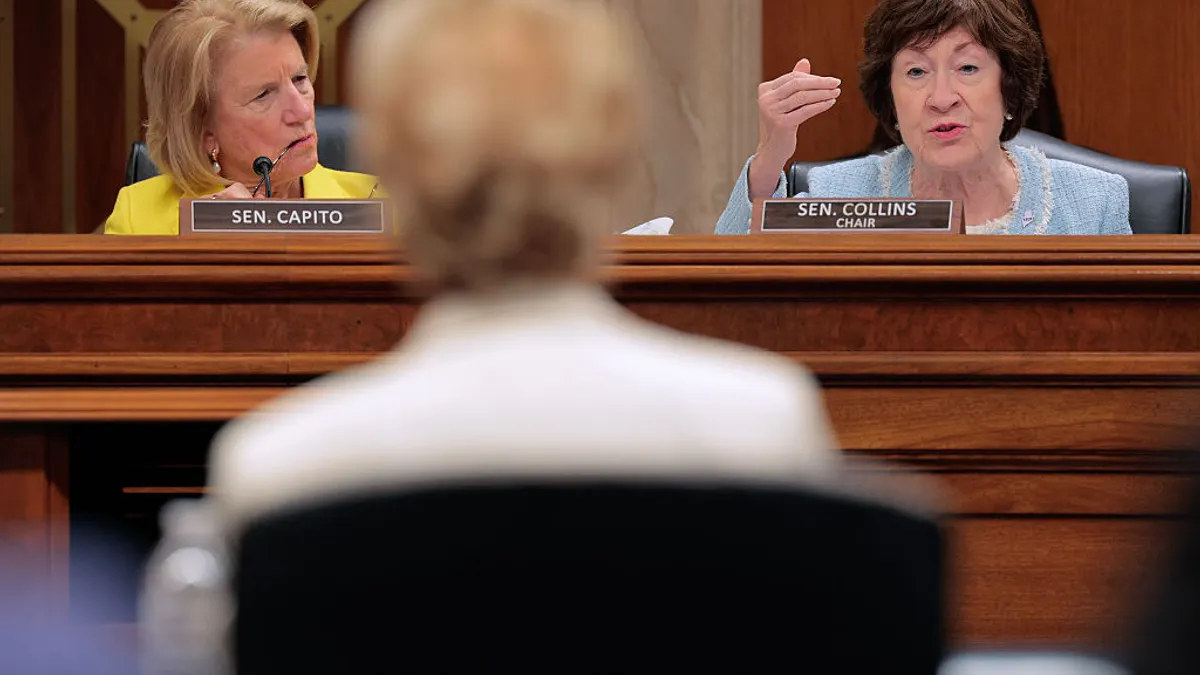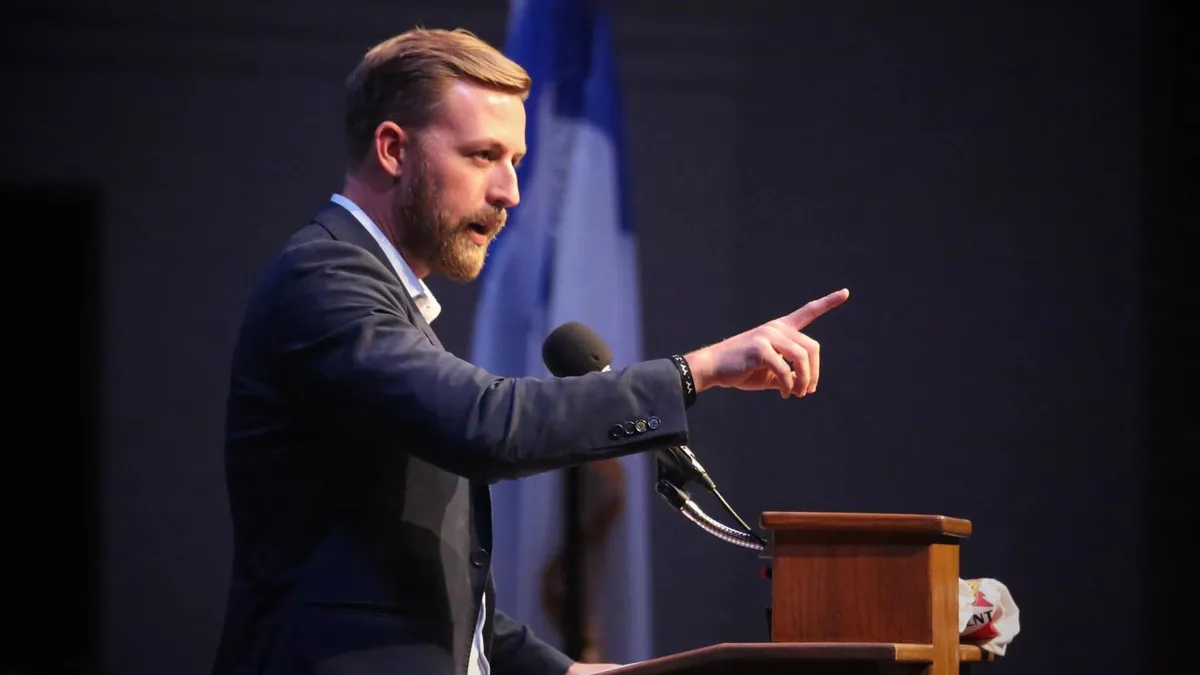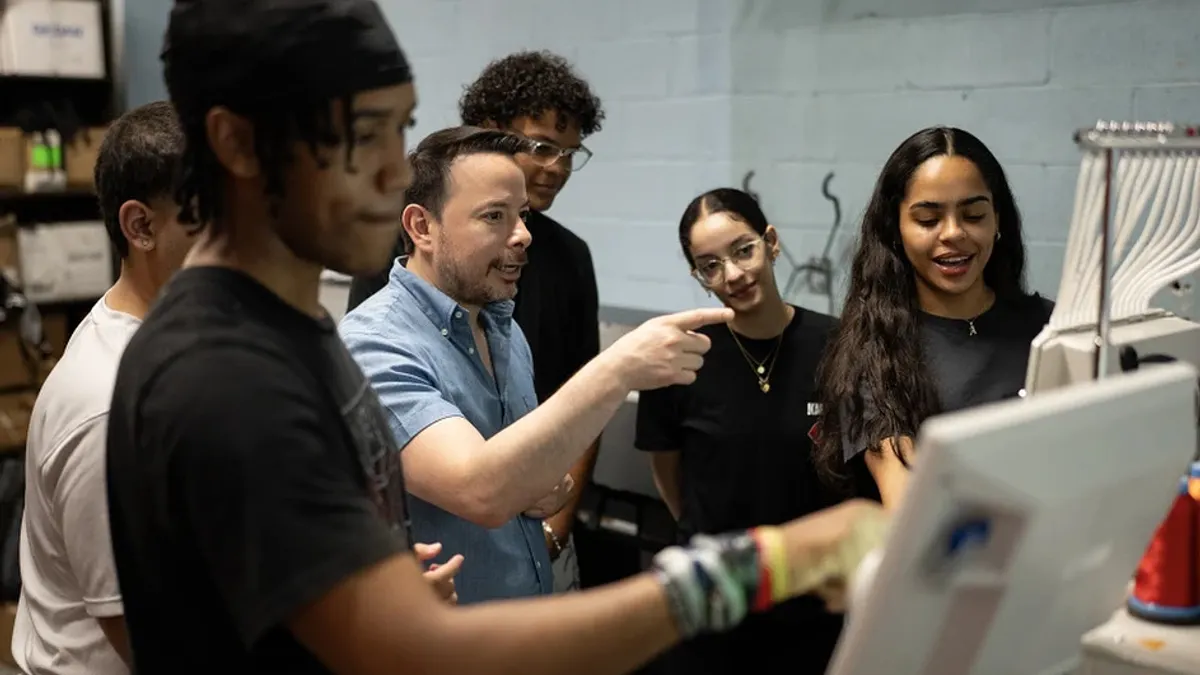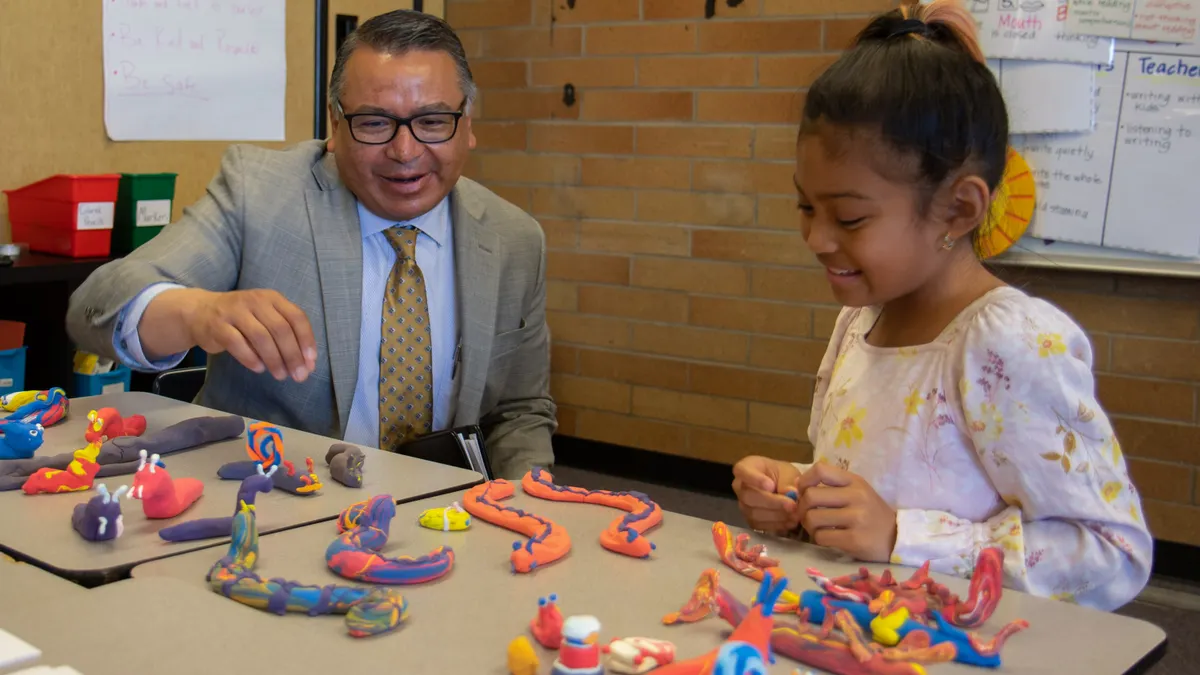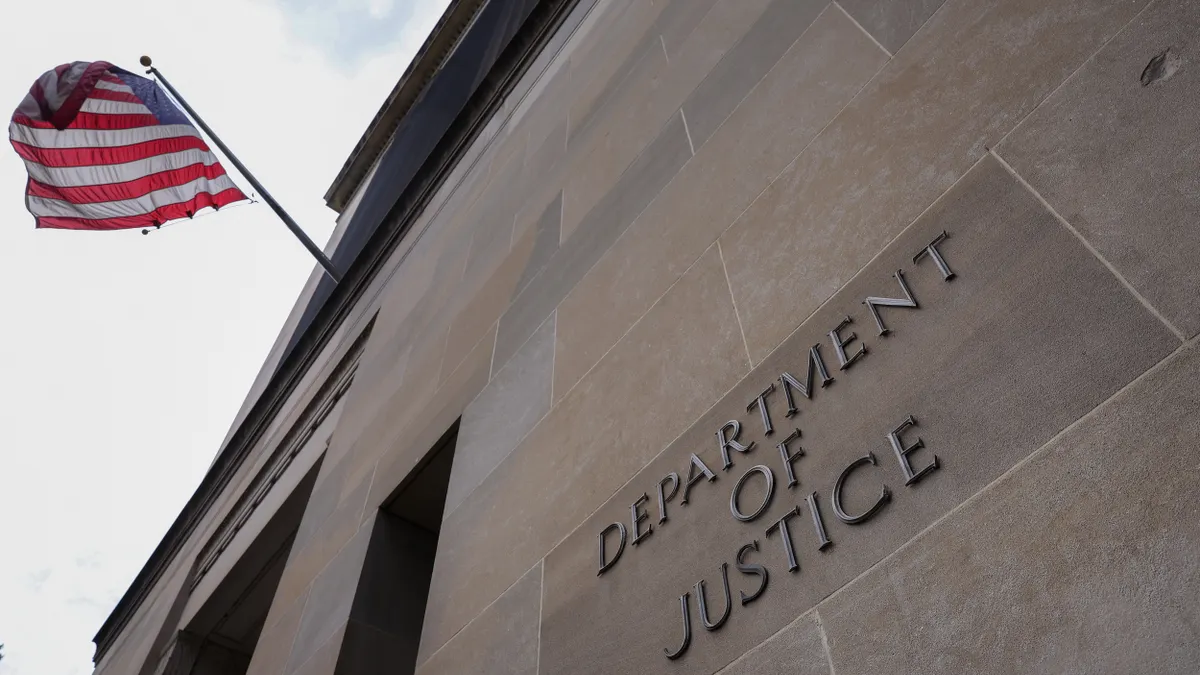A White House plan to consolidate pockets of special education funding in fiscal year 2026 has critics concerned that vital programs will be cut or loosely absorbed into remaining special education allocations.
Supporters, however, see the budget restructure not just as an opportunity to maintain spending levels for federal special education grants, but to simplify and effectively distribute the money that educates and supports the nation's 8.4 million infants, toddlers, children and young adults with disabilities.
Overall, the FY 26 budget proposal that was released in stages in April and May provides level funding for the Individuals with Disabilities Education Act at $15.5 billion.
However, the Trump administration said it wants to consolidate some grants that serve different purposes so states and districts have more spending flexibility. Those opposed to the plan say this design would remove guaranteed funding for certain programs because it would be each state's decision to fund those.
Specifically, the budget plan would consolidate the smaller IDEA, Part B preschool grants to states and IDEA, Part D funding for technical assistance and teacher preparation into the larger Part B, school-age program. The proposed funding for the preschool grant and Part D programs equals $677.6 million, which is the exact amount of increase recommended in the budget proposal for the overall Part B program.
"We're not cutting any of the IDEA funding. It is staying intact, and so the president really has a commitment to make sure that that funding does get into the states," said U.S. Education Secretary Linda McMahon to a Senate appropriations subcommittee on June 3 in Washington, D.C.
But critics say the budget plan would reduce special education funding, not increase it. They also denounce the merging of grant programs. The Council of Administrators of Special Education, a professional organization of special education directors, said the various IDEA funding programs are designed to work together as a continuum of supports and services.
"Reducing the components of the law to one block grant, without the guarantee that each part would be funded, is a serious disservice to children and youth with disabilities, their families, and the educators that serve them," CASE said in an email to K-12 Dive.
Programs planned for consolidation into the overall Part B program include parent information centers, which were funded at $33 million in FY 2025. Those centers have exceeded or met performance measures for the past five fiscal years.
The Part B, grants to states for school-aged children ages 3-21, as proposed, would provide an average of $1,944 per student with disabilities. That is about 10.9% of the national average per-pupil expenditure for the additional cost of providing special education and related services. Funding to educate students with disabilities also comes from other federal, state and local coffers.
The budget for IDEA Part C for services to infants and toddlers with disabilities — at a proposed level funding of $540 million — would remain a separate formula grant program.
Comparing IDEA FY 24 and proposed FY 26
Although supporters say the fiscal redesign would give states more flexibility with spending the Part D dollars, the Trump administration said states would still be required to meet key IDEA accountability and reporting requirements under Parts B and C.
The administration would also phase out discretionary grant competitions previously federally funded under Part D, allowing states to decide whether to continue those activities. States would be required to at least maintain their funding of special education — or send local school districts funding that's equal to or more than what was provided the preceding school year. This is also known as state maintenance of effort.
Funding for the Institute of Education Sciences, which hosts a center for special education research, would be cut by 67%. The Trump administration is planning to reform the IES to be more "meaningfully supporting and useful to practitioners," the budget justification said.
Changes already underway
The Trump administration has not waited for the annual appropriations process to reform the federal government, including at the U.S. Education Department and within the special education offices.
The White House and U.S. Education Secretary Linda McMahon have vowed to cut what the administration calls federal waste and fraud and give local school communities and parents more decision-making authority. As part of that, the Education Department has reduced its workforce by about half, canceled more than $1 billion in grant funding, and issued an executive order to begin closing the Education Department, although legal challenges have slowed down those plans.
The administration has also indicated it wants to move special education programming from the Education Department to the U.S. Department of Health and Human Services.
"We're not cutting any of the IDEA funding. It is staying intact, and so the president really has a commitment to make sure that that funding does get into the states."

Linda McMahon
U.S. education secretary
The Education Department, in an April 28 letter to Sen. Lisa Blunt Rochester, D-Del., said that no employees in the Office of Special Education Programs or the Rehabilitation Services Administration were subject to the March 11 layoffs at the agency.
Staff at the Office of Special Education and Rehabilitative Services, which is the office that oversees OSEP and RSA, who were laid off were involved in policy and administrative functions. Those roles can be reassigned or eliminated to create "a more efficient, cost effective, and accountable organizational structure," according to the letter, which was signed by Sarah Ursprung, acting assistant secretary for legislation and congressional affairs.
The letter added that OSEP continues to monitor states’ compliance with IDEA and has not made any changes to procedures regarding significant disproportionality, which is the IDEA requirement for determining if a school or district has racial overrepresentation or underrepresentation in special education identifications, placements or discipline. During the first Trump administration, the Education Department tried to rescind the Equity in IDEA regulation but lost a court challenge to do so.
Still, some disability rights advocates and special education administrative groups worry that the federal government's move to reduce its role in education will harm civil rights protections for students and families and leave schools with fewer resources.
There have been no policy guidance letters issued by OSERS or OSEP since January, and the last annual congressionally mandated report about IDEA was released in March 2024, according to the Education Department's website. However, OSERS has issued several special education-specific notices for grant applications in recent months. And OSEP released state determinations for IDEA implementation as expected in June.
This crossroads comes at a time when more students are qualifying for special education services, and when expanding private school choice options are putting more pressure on public schools to serve students with disabilities who may not have access to schools of their choice.
One poll, however, found parents had mixed emotions about dismantling the Education Department. When Understood.org, a nonprofit that provides resources to people with learning and thinking differences, asked parents with school-aged children who qualify for IDEA services or services and accommodation under Section 504 of the Rehabilitation Act about the issue, 30% said they were hopeful, 27% were excited, 30% were afraid, 31% were angry and 32% were anxious.
Additionally, 90% of this same group of parents said they were concerned that dismantling the Education Department would impact the quality of their child’s education.
Support and opposition
Since the beginning of the year, several Republican-leaning states have asked for more fiscal flexibility with federal education dollars through consolidated or block grants that carry fewer federal restrictions and requirements. Outside of IDEA funds, the FY 26 budget proposal for the entire Education Department budget recommends consolidating 18 current competitive formula funding grant programs into one $2 billion formula grant program.
Supporters of the move have said states and local districts are in the best position to allocate the federal dollars, because they know the state and local needs and can spend the money more efficiently without onerous federal rules.
The Education Department's FY 26 budget proposal “lowers federal spending on duplicate and burdensome programs, safeguards critical programs like special education and Title I, and gives states and communities more flexibility and freedom to drive innovation," said Jeanne Allen, founder and CEO of the Center for Education Reform, an organization supportive of private school choice, in an email to K-12 Dive. "It also respects the role of parents and boosts parental choice programs."
"I just hope that IDEA doesn't become this political football that gives the Trump administration an excuse to further cut a program that's already underfunded."

Sen. Chris Van Hollen, D-Md.
But the Council for Exceptional Children, an organization for professionals who work in special and gifted education, said in an email to K-12 Dive that rather than spur flexibility, the FY 26 spending plan "removes vital national support for special education," because it takes away dedicated dollars for addressing educator shortages, providing training and assisting families.
The budget, "makes deep cuts that would negatively impact infants, toddlers, children and youth with disabilities and the professionals who support them," CEC said.
During a May 6 forum held by Democratic senators in Washington, D.C., several members and witnesses spoke about their concerns on restructuring IDEA grant programs.
"I just hope that IDEA doesn't become this political football that gives the Trump administration an excuse to further cut a program that's already underfunded," said Sen. Chris Van Hollen, D-Md., who has sponsored a bill that calls for increasing IDEA funding by 40% of the average per pupil expenditure, or to $69.6 billion by fiscal year 2035.
Kristen Scott, a high school paraprofessional who has worked for Elk River School District 728 in Minnesota for 20 years, worries about what federal spending cuts would mean for her school and says special education programs need more money, not less.
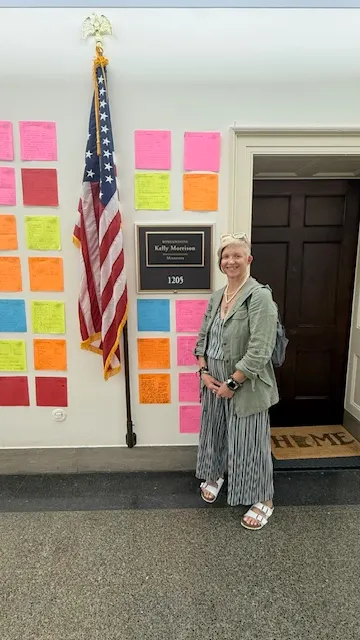
She's not only concerned about cuts to annual appropriations but is also worried about potential reductions to Medicaid benefits. Schools that provide health services for students who qualify for IDEA services can be reimbursed for those costs under the program. Scott's job includes helping students with disabilities with their medical equipment, and with feeding and using the bathroom.
If Medicaid or IDEA funding is reduced or cut, schools will still be legally bound to provide services required by a student's individualized education program, but that means budgets for other educational programs will be squeezed, said Scott, who is also a member of AFSCME Council 65, a labor organization.
"That's just going to put us even further on our back foot and make it harder to provide the services that we need and to keep kids healthy and happy and safe," Scott said.


